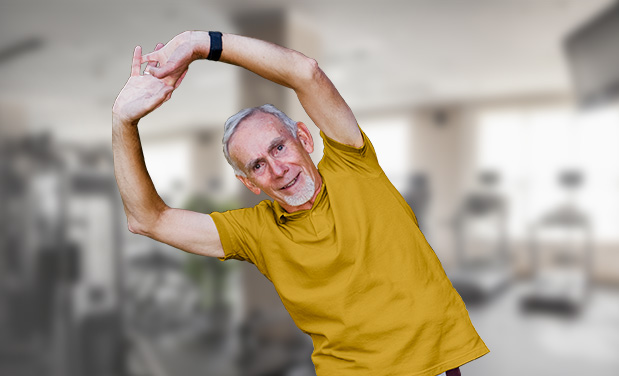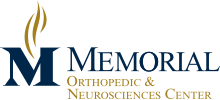LSVT® LOUD Program
Cheryl Michael, speech language pathologist, discusses the LSVT® LOUD Program.
What is the LSVT® LOUD Program?
LSVT® LOUD is a speech and voice program that was specifically designed for patients with Parkinson’s disease. It’s named for Lee Silverman. LSVT stands for Lee Silverman Voice Treatment, and Lee Silverman was this kind lady who agreed to take part in the program as their initial patient when Dr. Cynthia Fox and Dr. Lori Ramig were developing this program. So, they named the program for her. They’ve been developing the program and honing and tweaking it for over 25 years. They continue to do research all the time.
How does speech therapy help patients with Parkinson’s?
Patients with Parkinson’s disease oftentimes will notice changes in their voice and in their speech. We see things like low vocal volume or monotone voice. Oftentimes, these patients will mumble or speak very, very quickly so you can’t understand what they’re saying. Unfortunately, due to the Parkinson’s disease, they perceive that their voice is still normal, so they don’t often realize that other people can’t understand them until their families are telling them, “I can’t hear what you’re saying” or “I didn’t understand. Can you say that again for me?”
What is unique about the LSVT® LOUD Program?
For me, what makes it unique is that there’s so much research that has gone into it. Dr. Ramig and Dr. Fox developed the program on their own, and they’ve done research to back it up. Using clinical research, they looked at so many different ways to structure the program to determine the best way to deliver it. One of the things that also makes it unique is that they continue to do research today. Also, as a trained or certified LSVT® LOUD clinician, I’m required to do certification renewal every two years and keep up with what their current research is.
Discuss how you work with patients in the program.
When we get an order from a physician to see a patient, they come in for a full voice evaluation. During that evaluation, we look at what they can do with their voice including how loud are they when they’re just talking in a conversation with us or when they’re talking about something in their life that’s interesting to them. We record the voice and get an idea of what their volume is. Then, we do some exercises to see can they be a little louder to see if they are a good candidate for what we have to offer. We meet four times a week for four weeks, and each treatment session is about an hour. We go through a whole series of exercises that are specifically designed for the LSVT® LOUD Program. We work on things like stretching out a vowel for as long and loud as you can or reciting some functional phrases you would say every day like, “Good morning. Is it time for my medicine? Did you let the dog out?” It all has this underlying theme of everything you say needs to be loud.
What kind of commitment do patients need to make outside the office sessions?
You have to do some exercises at home. The exercises are sort of a mini session, so the same exercises that we do in the clinic the patients are expected to do at home. We have it all laid out for them, and we tell them it’s like brushing your teeth or taking your medicine. Those are not things you would skip during the day, and we don’t want you to skip these exercises. If you don’t do the exercises, you can’t really expect the kind of success that you would if you did the exercises as part of the program.
Can the LSVT® LOUD Program help patients with other conditions?
It does. That’s been part of their research, and they’ve really discovered it can be helpful for patients with multiple sclerosis or patients who’ve had a stroke or some of the speech or voice deficits that can happen because of a stroke. They’ve even done research in the last five to 10 years with children, and they’re seeing some really good outcomes with children with cerebral palsy or children with Down syndrome.
How does the LSVT® LOUD Program work with other therapy services at Memorial?
In the speech pathology department, we offer LSVT® LOUD, and we have clinicians here who are certified and trained to provide that five days a week. We work with the occupational therapy department, and those clinicians can provide LSVT® BIG. In LOUD, we work on a loud voice, sort of over accentuating your voice being bigger, but we say loud. In occupational therapy, they work on big movements like reaching farther or stepping larger. They work really well together.
Are less intensive speech therapy programs available as well?
It’s hard for some people to commit to four times a week for four weeks. We do see Parkinson’s in patients who are younger and younger these days, and some of them are still working full time. Four times a week can be really difficult. We offer some alternatives to LSVT® LOUD like traditional speech therapy. That’s typically twice a week, and we go four to six weeks to see how we’re doing. Then, we reassess and see if we need to continue. We offer another program called Speak Out, and that’s another speech voice program that was designed for patients with Parkinson’s disease. It doesn’t have quite the intensity of the LSVT® LOUD but the same sort of idea of being louder. Their mantra is “Speak with Intent.” With Speak Out, I work with patients to be intentional in everything they say whether it’s little comments, speaking at work or to family, or on the phone. I always tell my patients what you have to say is just as important as what everybody else has to say, but you just have to work a little harder to be heard.
What are some of the success stories of the LSVT® LOUD Program?
One thing I see that really makes me feel good is patients who have grown children who maybe don’t live in the area. They miss their grandkids, and they don’t see their grandkids or their children very often. When they can tell me that, “I talked to my daughter on the phone, and she said, ‘Wow, Mom! I could really hear you today!'” I think that just speaks volumes for what this program has to offer.

LSVT Big and Loud Programs
These voice and exercise programs have been created for patients with Parkinson’s and other neurological conditions. Memorial Hospital is one of the only hospitals in the area to offer both programs together.

